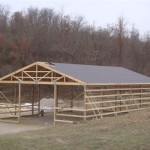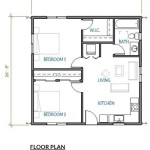Elevated House Plans For Flood Zones
If you're building a new home in a flood zone, it's important to take steps to protect your investment. One way to do this is to elevate your house above the expected flood level. This can be done by building on a higher foundation, or by using piers or pilings to raise the house above the ground.
There are several benefits to elevating your house in a flood zone. First, it can help to prevent flooding damage to your home and belongings. Second, it can help to reduce your insurance premiums. And third, it can give you peace of mind knowing that your home is protected from flooding.
If you're considering elevating your house in a flood zone, there are several things you'll need to do. First, you'll need to obtain a building permit from your local building department. You'll also need to hire a qualified contractor to design and build your elevated house.
The cost of elevating your house will vary depending on the size of your home, the height of the elevation, and the materials used. However, the investment is worth it when you consider the potential cost of flood damage.
Types of Elevated House Plans
There are several different types of elevated house plans available. The most common type is the raised foundation house. This type of house is built on a raised concrete or block foundation. The foundation is typically 2-3 feet above the ground, and the house is built on top of the foundation.
Another type of elevated house plan is the pier and beam house. This type of house is built on piers or pilings that are driven into the ground. The piers or pilings support the beams that the house is built on.
A third type of elevated house plan is the stilt house. This type of house is built on stilts that are driven into the ground. The stilts support the floor of the house, which is typically elevated 4-6 feet above the ground.
Choosing the Right Elevated House Plan
When choosing an elevated house plan, there are several factors to consider. The first factor is the height of the elevation. The height of the elevation will determine how much protection your home has from flooding. The second factor is the type of foundation. The type of foundation will determine how much support your house has and how resistant it is to flooding. The third factor is the cost. The cost of elevating your house will vary depending on the size of your home, the height of the elevation, and the materials used.
Once you've considered these factors, you can choose the elevated house plan that's right for you. With a little research, you can find a plan that meets your needs and protects your home from flooding.

Flood Zone Designs N House Design Group

T4027 N House Design Group

30 Elevated Houses For Flood Prone Areas House Outside Design Simple Bungalow Designs

Elevated House Design A Modern Approach To Living

Elevated 2 Bed House Plan For Flood Prone Areas 22340dr Architectural Designs Plans

Flood Proof House A Designer S View

Elevated House Design A Modern Approach To Living

Flood Zone Houses An Ideabook By Mo

30 Elevated Houses For Flood Prone Areas Village House Design

Elevated Piling And Stilt House Plans Coastal From Home








